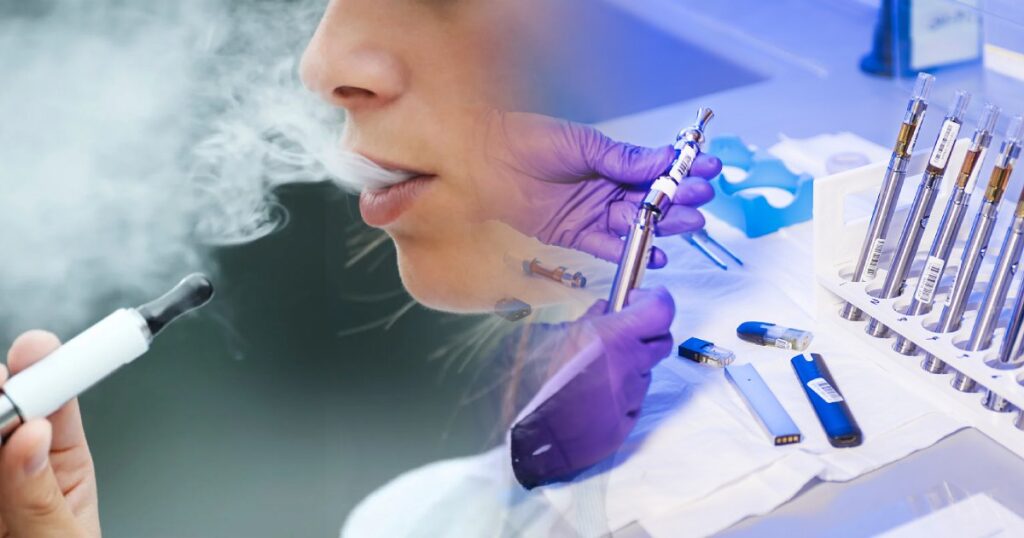Medical Uses of Cannabis Vape: Therapeutic Prospects and Applications
As the medical use of cannabis becomes more widespread, many patients and healthcare providers are exploring the potential benefits of vaporizing cannabis for therapeutic applications. Unlike traditional smoking, vaping cannabis delivers cannabinoids such as THC directly to the bloodstream through the lungs, providing rapid relief from symptoms without the harmful byproducts of combustion. Vaping allows for more precise dosing and control over the intake of THC, and the devices used can offer a discreet and convenient way to administer medical cannabis.
However, it is important to use these products responsibly and ensure they are sourced from reputable dispensaries, as the concentrations of THC in vape products can be significantly higher than in plant form. Patients should be aware of the risks associated with vaping and consult healthcare professionals to determine if it’s appropriate for their condition. The nuances of using cannabis vape products for medical purposes involve not only understanding the potential therapeutic effects but also being informed about the proper usage and potential risks associated with this delivery method.
Key Takeaways
- Vaping cannabis provides rapid symptom relief and precise dosing for medical purposes.
- THC concentrations in vape products are high, requiring careful sourcing and usage.
- Consultation with healthcare providers is crucial for safe and effective cannabis vape use.
Medical Benefits and Considerations of Cannabis Vaping
As you explore the uses of medical cannabis, it’s crucial to weigh the therapeutic potential of vaping against its safety and regulatory landscape.
Therapeutic Effects on Chronic Pain and Other Conditions
When addressing chronic pain and other medical conditions, vaping cannabis can provide rapid relief due to the quick absorption of cannabinoids like THC and CBD into your bloodstream. This method allows for precise dosing, which is essential for effectively managing symptoms.
Comparisons With Other Cannabis Consumption Methods
Compared to smoking, vaping is thought to release fewer carcinogenic compounds, thus potentially reducing your risk of cancer and other lung-related issues. When you use a vaporizer, you’re inhaling an oil or flower that has been heated to the point just before combustion, which can decrease exposure to harmful byproducts.
Safety Profile and Potential Health Risks
However, there are risks associated with vaping. Reports link certain vaping products to cases of lung injury and exposure to heavy metals. Unregulated products may not disclose their contents thoroughly, and misuse can lead to safety concerns, underlying the necessity of choosing FDA-approved or regulated products.
Regulations and Legal Status
The legal status of medical marijuana and vaping varies by location. Where it’s legal, medical use of cannabis is typically subject to strict regulations. It’s crucial for you to adhere to local laws and to use medicinal cannabis under the supervision of a healthcare provider.
Practical Aspects of Using Cannabis Vape Products
Navigating the world of cannabis vape products involves understanding the types available, how to use and maintain them, and the benefits of portability and discretion. As you delve into vaping, you must grasp these practical aspects to ensure a positive experience.
Understanding Different Types of Cannabis Vape Products
There are various cannabis vape products on the market, each offering different experiences and benefits. The primary forms include:
- Disposable Vape Pens: Pre-filled with cannabis oil, these are ready to use right out of the package and can be discarded after the oil runs out. They’re straightforward to use and portable.
- Cartridge-Based Systems: These consist of a battery and a pre-filled cartridge containing cannabis oil. The cartridge screws onto the battery and is replaceable.
- Refillable Vaporizers: These vaporizers allow you to fill the chamber with cannabis oil or flowers manually. They often provide more versatility and can be more cost-effective over time.
When choosing a vape product, consider the type of cannabis experience you’re looking for, as well as the level of maintenance you’re willing to undertake.
Usage and Maintenance Tips
To ensure optimal function and longevity of your vape products:
- Keep the battery charged: Most devices indicate low power; regular charging provides uninterrupted use.
- Clean the mouthpiece and chamber regularly: Use isopropyl alcohol and a cotton swab to maintain cleanliness and prevent residue build-up.
- Store your device properly: Keep it at room temperature and away from direct sunlight to preserve the oil quality and battery life.
With proper care, your vape products can provide a consistent and enjoyable cannabis experience.
Accessibility and Discretion of Use
Cannabis vaping offers an element of discreet usage not always possible with other consumption methods. Vapes are often:
- Discreet: Emit less odor than traditional smoking methods, allowing you to use them without drawing attention.
- Portable: Compact in size, many vape devices fit easily in a pocket or purse, making them easy to carry and use on the go.
- Accessible: Widely available in regions where cannabis is legal, with options ranging from high-end vaporizers to more economical disposable pens.
By considering these practical aspects of cannabis vape products, you can choose and use your device with confidence, enjoying the convenience and discretion that vaping offers.
Frequently Asked Questions
In this section, you’ll find clear answers to common inquiries regarding the health impact of using vaporizers for medical cannabis.
What are the potential health benefits of using a dry herb vaporizer for cannabis?
Vaporizing cannabis with a dry herb vaporizer may reduce your exposure to some of the harmful substances that result from combustion. This method can offer relief without the byproducts of burning the plant material.
Can using a dry herb vaporizer lead to lung damage?
While vaporizing cannabis is considered less harmful than smoking, there is still a risk of lung damage because inhaling any hot substance can irritate lung tissue. Long-term health effects are still being studied.
How does vaping cannabis flower compare to traditional smoking in terms of health?
Vaping cannabis flower is thought to be less harmful than traditional smoking as it does not involve combustion, thus producing fewer carcinogens and toxins. However, it is essential to note that vaping still poses health risks.
What are the differences between vaping and vaporizing cannabis?
Vaping typically refers to using a device to heat liquid cannabis extracts, while vaporizing refers to heating the dry herb directly. The main difference lies in the heated substance— concentrate or flower.
Are there specific vaporizers that are considered safer or more effective for medical cannabis use?
Particular vaporizers offer features like temperature control, which may make them safer or more effective for medical cannabis use. Researching products and reading consumer reviews can help determine which vaporizer suits your needs.
Can vaping cannabis contribute to respiratory issues such as bronchitis or COPD?
Yes, vaping cannabis may contribute to respiratory issues. Vaping can cause airway inflammation, leading to symptoms like coughing and shortness of breath associated with bronchitis and COPD.





